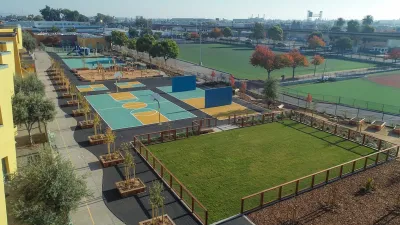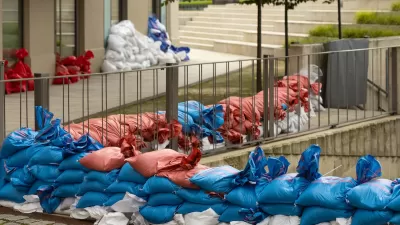How important are the names we use? As Shakespeare said, "What's in a name? That which we call a rose by any other name would smell as sweet." I’ve been struck by this thought recently as I’ve been considering the myriad of organizations and stakeholders trying to have their particular term for stormwater management techniques be more widely adopted in the nomenclature.
How important are the names we use? As Shakespeare said, "What's in a name? That which we call a rose by any other name would smell as sweet." I've been struck by this thought recently as I've been considering the myriad of organizations and stakeholders trying to have their particular term for stormwater management techniques be more widely adopted in the nomenclature.
For example, in one corner there is the low impact development contingent. They want developers to installing a range of natural stormwater approaches that allows the land to act as a sponge and soak up runoff. New Urbanists recently launched "Light Imprint New Urbanism," a new term for "a development technique which aims to lie lightly on the land." I've even entered the fray with the term "site-specific strategies" for those stormwater design solutions that can be incorporated into compact urban areas.
Aren't we all trying to say the same thing to developers, architects, town planners, local governments and everyone else who may be interested? "Hey, look, people! You can have good urban form and manage stormwater on-site!"
It seems to me that the issue is not what these approaches are called, but rather: are they allowed? From what I've seen, the approaches that can manage stormwater runoff on-site, such as strategies that infiltrate, evaportranspirate, or retain runoff for later reuse, are simply not allowed in many communities. They are not allowed because stormwater regulations have not yet recognized, agreed on, or measured the effectiveness of these strategies.
It's an easier proposition to say that a detention basin of a certain size will effectively manage runoff from X number of acres. Data on detention and retention ponds most readily fit into runoff models and permit processes, thereby becoming the path of least resistance. Further cementing these practices are manuals that describe these ponds as "best management practices" for stormwater management. Many of these structural stormwater practices can be bad for urban form – and placemaking in general-- because they require significant land and often don't work for small sites, such as infill or downtown revitalization projects.
Finally, some of these on-site stormwater water approaches, such as rain gardens or grass swales, can trigger other regulations, such as underground injection control requirements, which were originally intended as waste disposal mechanisms-think gas stations or oil wells. If I were a developer, think of the hurdles I would need to clear to install a rain garden-and have it count against my stormwater requirements.
I'm now asking myself if we aren't all wasting time and diluting the importance of our collective message by arguing over what to call these approaches. I think Shakespeare got it right-worry less about what we call things and more about what they are. Don't you think it's time we stop discussing what we call these approaches and start fixing our federal, state, and local water regulations so these approaches can start showing up in new developments?

Manufactured Crisis: Losing the Nation’s Largest Source of Unsubsidized Affordable Housing
Manufactured housing communities have long been an affordable housing option for millions of people living in the U.S., but that affordability is disappearing rapidly. How did we get here?

Americans May Be Stuck — But Why?
Americans are moving a lot less than they once did, and that is a problem. While Yoni Applebaum, in his highly-publicized article Stuck, gets the reasons badly wrong, it's still important to ask: why are we moving so much less than before?

Using Old Oil and Gas Wells for Green Energy Storage
Penn State researchers have found that repurposing abandoned oil and gas wells for geothermal-assisted compressed-air energy storage can boost efficiency, reduce environmental risks, and support clean energy and job transitions.

Updating LA’s Tree Rules Could Bring More Shade to Underserved Neighborhoods
A new USC study finds that relaxing Los Angeles’ outdated tree planting guidelines could significantly expand urban tree canopy and reduce shade disparities in lower-income neighborhoods, though infrastructure investments are also needed.

California's Canal Solar Projects Aim to Conserve Resources and Expand Clean Energy
California’s Project Nexus has begun generating electricity from solar panels installed over irrigation canals, with researchers and state agencies exploring statewide expansion to conserve water and boost clean energy production.

HHS Staff Cuts Gut Energy Assistance Program
The full staff of a federal program that distributes heating and cooling assistance for low-income families was laid off, jeopardizing the program’s operations.
Urban Design for Planners 1: Software Tools
This six-course series explores essential urban design concepts using open source software and equips planners with the tools they need to participate fully in the urban design process.
Planning for Universal Design
Learn the tools for implementing Universal Design in planning regulations.
Heyer Gruel & Associates PA
City of Moreno Valley
Institute for Housing and Urban Development Studies (IHS)
City of Grandview
Harvard GSD Executive Education
Salt Lake City
NYU Wagner Graduate School of Public Service
City of Cambridge, Maryland





























